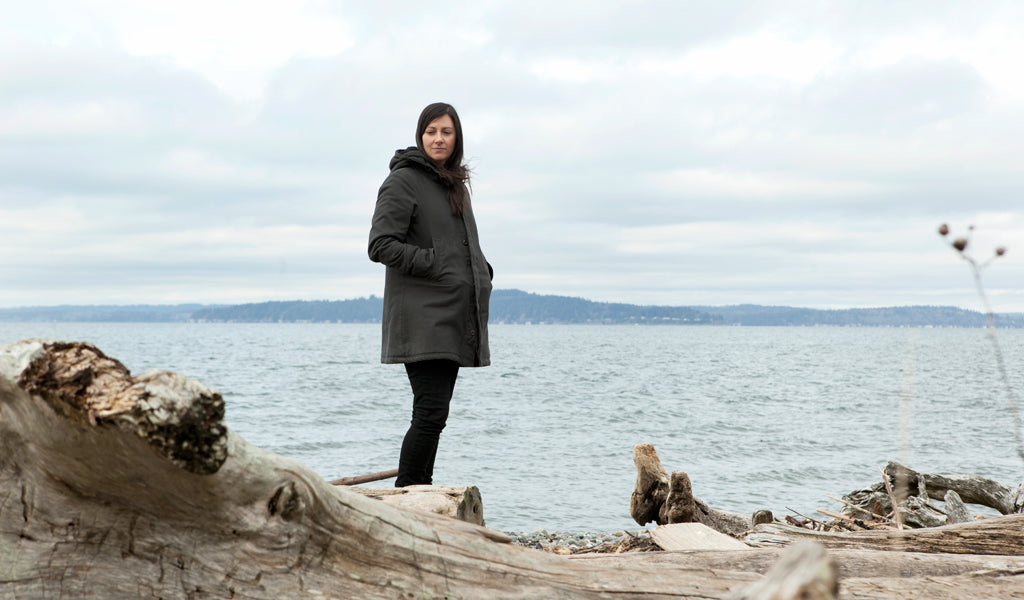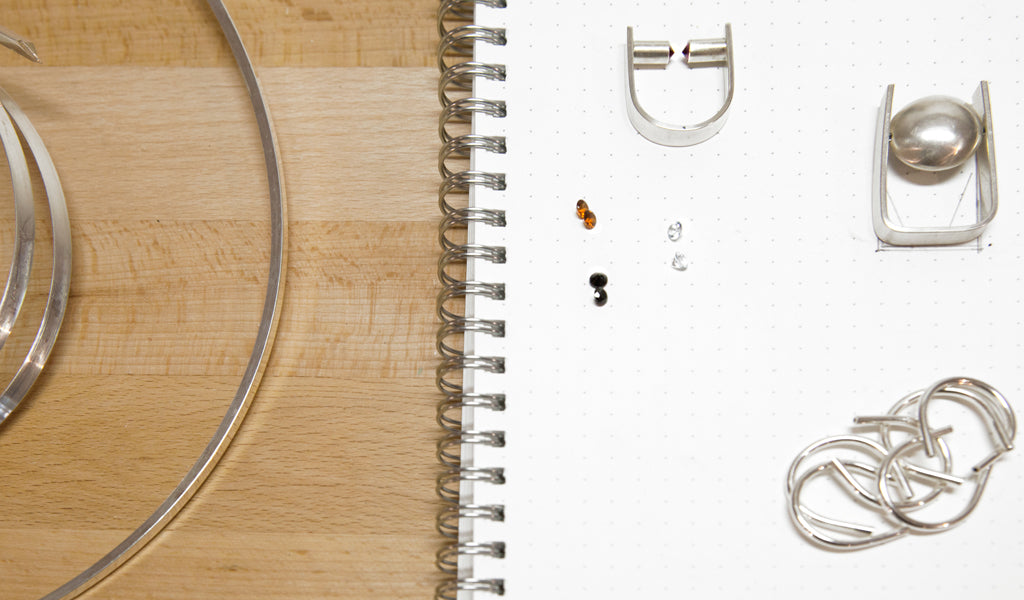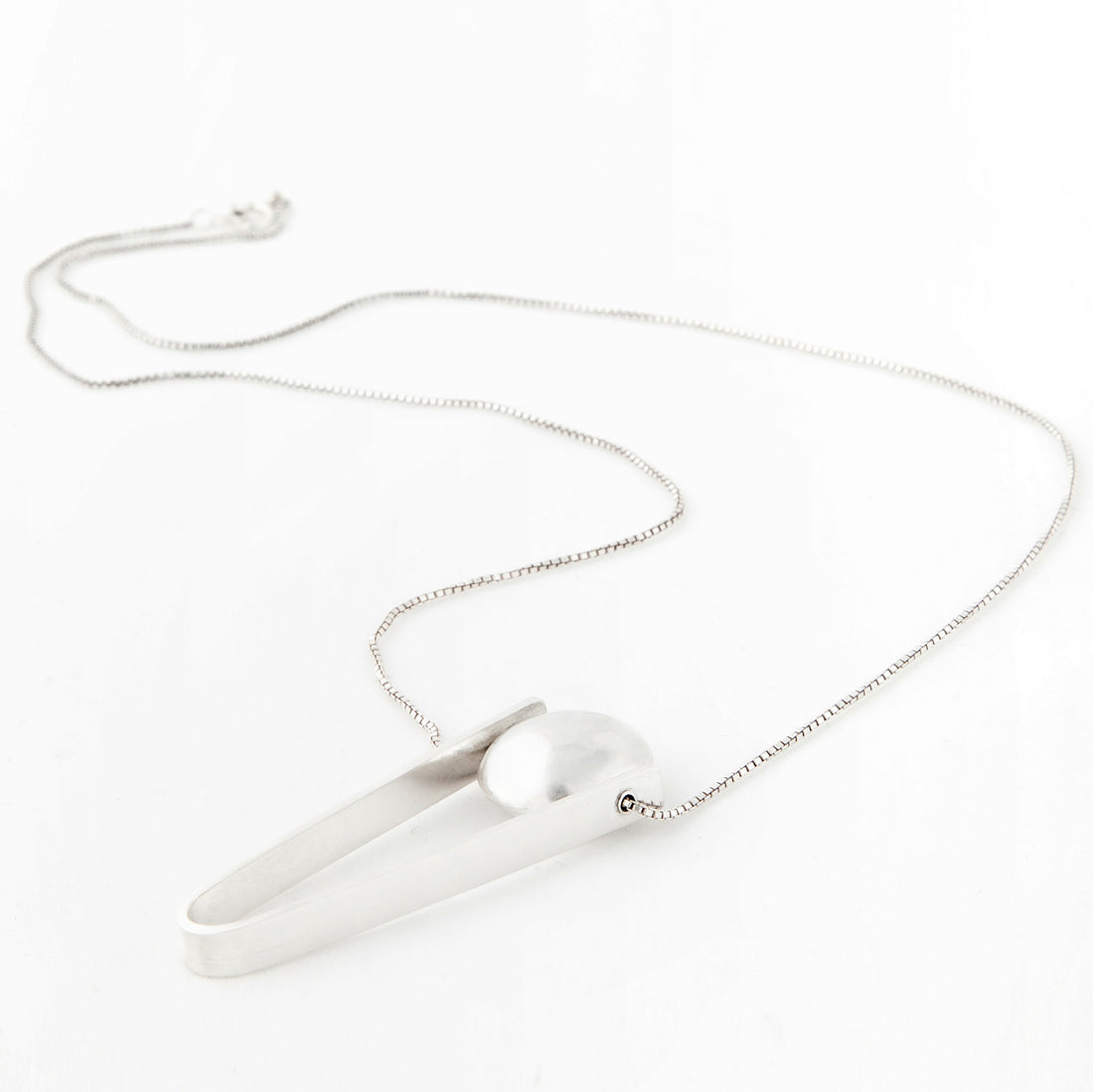The Formality is a line of sterling silver jewelry designed and fabricated by Amber Rossino in Seattle, WA. Referencing the Modernist studio jewelry movement, Rossino creates minimal geometric and architectonic pieces that incorporate sculptural and kinetic elements while emphasizing structure, tension, and negative space. Conceptual explorations of basic geometry, visual mathematics and symmetry/asymmetry result in both limited production collections and one of a kind pieces. We recently visited Amber's home studio and spoke with her about her practice.
Photography by Rachael Lang

How did The Formality come to life? Tell us about your background as an artist and how you became involved in jewelry design.
It’s been a very non-linear, organic process. I’m essentially an autodidact, with no formal degree in art or metal-smithing. I first became involved in designing and making jewelry during high school, where I had a very progressive 3D art teacher who was also a practicing artist and adjunct college professor. He taught me the basics of jewelry fabrication — soldering, stone setting, finishing. I was part of a small group that showed interest and aptitude for jewelry making, and because I attended an arts and music high school I was encouraged to specialize and develop independently. We worked only in sterling silver, which is still my preferred medium. This early experience was unique and formative in that it laid the groundwork for my future as an artist. I’ve always felt more comfortable and creative in unstructured environments, and have continued to learn through research and experimentation. The Formality is a more recent development; one that coalesced after my husband and I bought a house and built out my studio space. Having a permanent place to set up allowed for a deeper examination of materials and techniques, and the ability to even slightly vanquish the separation between daily life and making art has brought me closer to articulating a clear aesthetic vision. My work is starting to feel more cohesive, like a developing collection, and less fragmented.

Walk us through your creative process. How do you approach an idea for a new design?
It varies! I’ll often use a concept or single shape as a starting point for developing ideas, a kind of design clustering exercise. The Bisect Series, where I used a simple circle to create several earring styles, is a good example of this process. I prefer this kind of immediacy because of its potential to produce a thematic collection, and because I can revisit the same shape or concept at any time. I design sliding and pivoting pieces in this way as well, starting with a type of hinge or direction of movement and working through variations on the idea. I do quite a bit of fabrication using silver sheet, and sometimes use thick paper to experiment with shapes and folds. Occasionally, I’ll do rough sketches to further define components or outline the steps involved in fabrication, or to reverse engineer a piece I deem successful so I can reproduce it.

What aspects of the Pacific Northwest have informed the aesthetic of your work?
I’m certainly aware of the visual heaviness of urban landscapes, so everything from architecture to machinery, and the scale structural changes taking place here, are informative. My daily commute from West Seattle runs a gauntlet of industrial factories and massive construction projects. I’m fascinated by the Nucor Steel plant, but I also live close to Lincoln Park and spend a lot of time at the beach looking at barnacle patterns and driftwood. Making jewelry that is more fluid and organic looking is relatively new for me. I attribute some of the new textures and surface treatments I’ve been using to the natural environment here, although I’m still partial to hard edges. I guess my aesthetic falls somewhere between larval galleries and I beams.

What inspires the elegant simplicity of your pieces and the choosing of materials?
My goal is to design pieces that are timeless and, for me, simplicity is inherent to that. I’m a pragmatic minimalist in regard to wardrobe, inclined to make pieces that are both understated and appropriate for daily wear. Simple shapes and uncluttered design are more attractive to me personally, so I make jewelry that I want to wear, while acknowledging others might enjoy it as well. Silver has always been my material of choice. I feel an affinity for its appearance and behavior, and I consider it a neutral material that can be worn with everything.

As an emerging jewelry line, what is your vision for the future of The Formality?
In the near future I plan to maintain a tight focus on finding my feet and voice as a jewelry designer. Sustainable growth is very important to me, as is spending time developing ideas. I think my best work is done while making one of a kind and limited production pieces, so ideally I’d like to strike a balance between the two. I’m very responsive to the geometry of garments, so I’d love to eventually collaborate with a clothing designer. I could envision making larger sculptural pieces in that context, which is something I’ve been wanting to do.


